How Do You Measure Paint Depth?
Posted by richard hale at
Measuring paint depth is a crucial skill for anyone involved in the automotive, restoration, or refinishing industries. Whether you're a professional auto body technician, a car enthusiast, or simply looking to assess the condition of your vehicle's paint, understanding how to measure paint depth is essential. In this comprehensive guide, we'll delve into the methods, tools, and techniques used to measure paint depth accurately.
Importance of Measuring Paint Depth
Why is measuring paint depth important? The thickness of automotive paint can provide valuable insights into the history and condition of a vehicle. It helps in various situations:
- Quality Control: In the automotive manufacturing process, measuring paint depth ensures that vehicles meet quality standards. Consistent paint thickness prevents issues like rust and corrosion.
- Paintwork Assessment: When buying a used car or evaluating the condition of your own vehicle, measuring paint depth can reveal potential hidden problems, such as previous accidents, touch-ups, or resprays.
- Restoration and Refinishing: Automotive enthusiasts and professionals rely on paint depth measurements to determine the scope of restoration work needed and ensure an even application of new paint during refinishing.
Methods of Measuring Paint Depth
Several methods and tools are commonly used to measure paint depth:
- Electronic Paint Thickness Gauges: These handheld devices use magnetic or eddy current technology to measure paint thickness accurately. They are user-friendly and provide instant readings. Some models allow you to switch between ferrous (steel) and non-ferrous (aluminum) substrates, as cars may have different materials in their construction.
- Ultrasound Devices: Ultrasonic paint thickness gauges use sound waves to determine paint thickness. They are highly accurate but can be more expensive and require a bit more expertise to operate.
- Visual Inspection: Experienced professionals can visually assess paint thickness by examining the appearance and texture of the paint surface. While this method is less precise, it can still provide valuable insights.
- Chemical Paint Strippers: In cases where precision is not essential, chemical paint strippers can be used to remove layers of paint until the substrate is reached. The removed layers are then weighed to estimate paint thickness.
- Cross-Section Analysis: This method involves taking a small sample of the painted surface and cutting it to examine the layers under a microscope. It is a highly precise but destructive method used mainly for research or forensic purposes.
Check this out: Comparing Paint Meters
Measuring Paint Depth: Step-by-Step
Here's a step-by-step guide on how to measure paint depth using an electronic paint thickness gauge, which is the most commonly used and practical method:
Step 1: Prepare the Surface
Ensure that the surface you're measuring is clean and free of contaminants, such as dirt, wax, or rust. Clean it thoroughly with a mild detergent and water, followed by a rinse and drying.
Step 2: Calibrate the Gauge
Calibrate the paint thickness gauge according to the manufacturer's instructions. Calibration ensures accurate readings.
Step 3: Select the Measurement Location
Choose a representative area on the vehicle's surface for measurement. Avoid areas with curves, body seams, or edges, as they can yield inconsistent results.
Step 4: Take the Measurement
Place the gauge flat against the surface, ensuring full contact. Press the gauge button to take the measurement. Repeat this process at multiple locations to ensure accuracy, especially if you suspect uneven paint thickness.
Step 5: Record the Readings
Record the paint thickness readings for each measurement location. Note any significant variations.
Step 6: Analyze the Results
Compare the measured values to the manufacturer's specifications or industry standards. Evaluate whether the paint thickness falls within an acceptable range.
In Closing
Measuring paint depth is a crucial skill for automotive professionals, car enthusiasts, car rental companies and anyone concerned about the condition of their vehicle's paint. It not only aids in assessing quality and condition but also plays a pivotal role in restoration and refinishing projects. By using the right tools and following the proper techniques, you can obtain accurate measurements and make informed decisions about your automotive projects or purchases.



